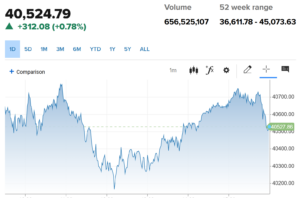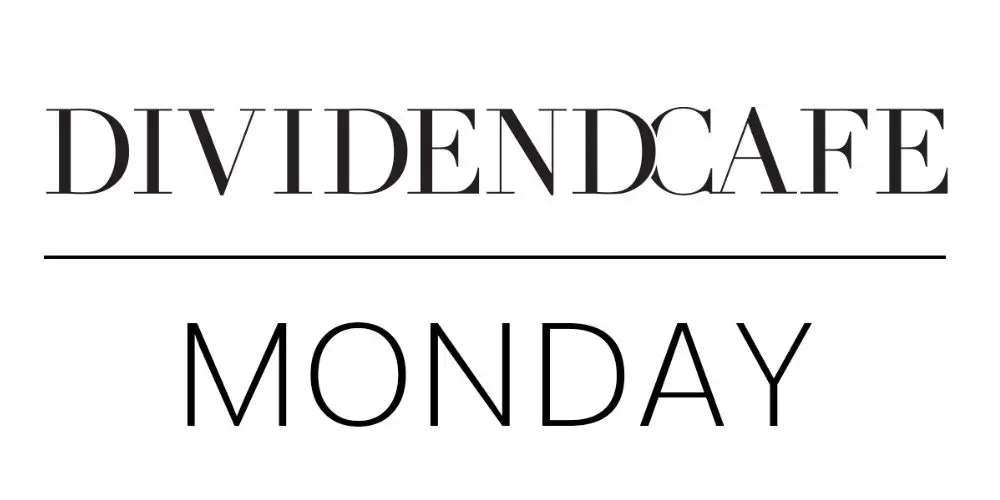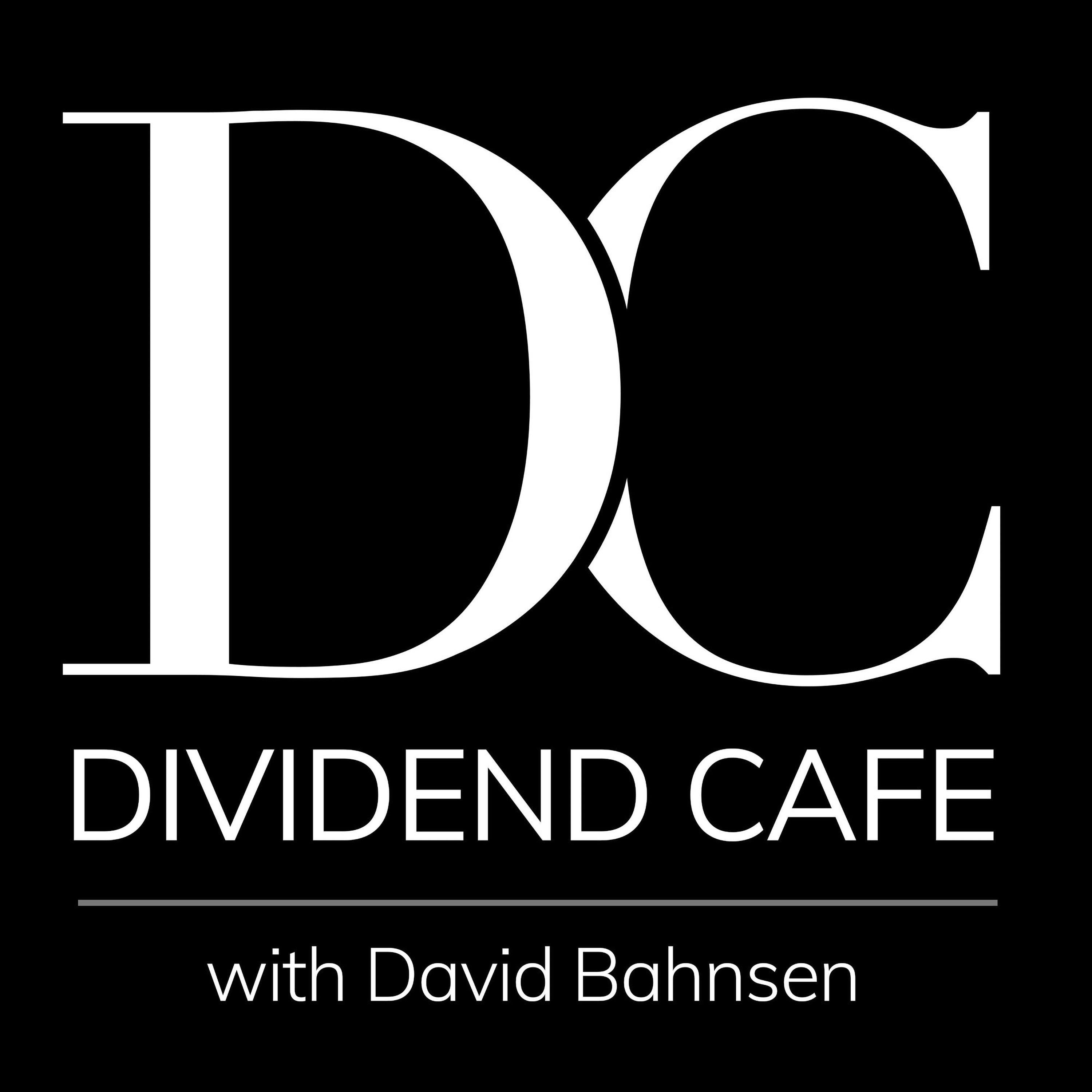Dear Valued Clients and Friends –
In what is only the eighth market day since the April 2 Rose Garden drama, markets today went way up, then went negative, then rallied back (but not all the way) to a nicely positive day. Today’s Dividend Cafe looks at the day-by-day action since, a simple breakdown of the three stages of grief (so far) in the bond market, and all the latest in “beautiful tariffs” as we jump into the Dividend Cafe!
Dividend Cafe on Friday did a needed deep dive into the crazy market week that was last week, analyzing where we have been and where we are going, and how investors ought to be thinking (and behaving). The written version is here (my favorite), the video is here, and the podcast is here.
Off we go…
|
Subscribe on |
Market Action
- Markets opened up today, went negative halfway through the day, then rallied back up, ultimately closing at the +300 spot where it opened.
- The Dow closed up +312 points (+0.78%), with the S&P 500 also up +0.79% and the Nasdaq up +0.64% (it had been almost +2.5% at its high).

*CNBC, DJIA, April 14, 2025
- So, let’s recap markets since the April 2 “Liberation Day” announcement (that came after markets closed):
- Thurs, Apr 3 – Market down 1,700 points; bond yields dropping substantially.
- Fri, Apr 4 – Market down over 2,200 points; bond yields still dropping. This capped off the third worst two-day decline in the S&P 500 since Black Monday.
- Mon, Apr 7 – Market down 350 more points (after a big head fake on false news of tariff pause); bond yields spike higher later in the day (presumably de-leveraging).
- Tue, Apr 8 – Market down 300 more points, with S&P down -1.7% more (into bear market territory at down 20%); huge volume in equity market trading; bond yields spiking up again; dollar dropping, oil collapsing, even Bitcoin falling substantially.
- Wed, Apr 9 – Market futures are down another 1,000 points pre-market; bonds continue selling off with yields still going higher. Then, at 10:30am PT, the President announces a 90-day suspension on tariffs (China excepted), and the S&P goes up 10%, Nasdaq 12%, Dow up 2,700 points on the day. All-time high in equity market volume (over 30 billion shares trade hands).
- Thurs, Apr 10 – Markets drop 1,000 points, S&P down -3.5%; dollar sells off most in a single day in three years; oil down again; bond yields still climbing.
- Fri, Apr 11 – Markets up and down all morning, down -350 points at low, but rally from there 1,000 points to close up over +600 points; bond yield up to 4.48% as week-long bond sell-off continues.
- Mon, Apr 14 – Markets rallied higher, gave up all of that and went negative, and rallied back into positive territory but way off of the highs of the day. Bonds rallied as the 10-year yield dropped 11bps. Most risk assets were up today.
- The ten-year bond yield closed today at 4.38%, down 11 basis points on the day. See below for a thorough explanation of what is happening in the bond market.
- Top-performing sector for the day: Real Estate (+2.15%) and Utilities (+1.75%) – likely a bond proxy story today.
- Bottom-performing sector for the day: Communication Services (+0.25%).
- From the beginning of 2022 through the open this morning, a 60% S&P 500 / 40% bond index portfolio is up … +2% per year.
- Much of where we go from here might, might, be less about the immediate drama of sentiment and market panic that took place since April 2, and might, might, now be more about economic fundamentals. The problem is that we do not know what damage has been done or will be done, out of the uncertainty of the moment. Some will argue that it was shallow, quick, and less than feared. Some will argue that it was substantial and is still ongoing. No one will argue there was no impairment at all. All things being equal, a market dropping in persistent day-by-day panic feels worse than a market dropping because of deteriorating economic fundamentals. But the latter still has to be monitored for impact on profits and valuations.
Tariff and Trade Update
- The big news over the weekend was the Trump administration’s waiver for Apple, Samsung, Taiwan Semiconductor, and those engaged in the making of smartphones, computers, and other electronics. The announcement came in an official White House bulletin called “Clarification of Exceptions under Executive Order 14257,” but nevertheless, the weekend media circuit saw some administration officials deny that there were exceptions, and Secretary Lutnick clarified Sunday morning that there were “delays” but there would be inclusion of this sector, though not all of it, at a later date, most likely. So ‘clarity’.
- The President also referenced exceptions to the 10% baseline tariff on other countries not named China. He said the reasons were obvious but didn’t say what the exceptions were or what the obvious reasons were.
- And then, on Monday, President Trump said, “I’m looking at something to help car companies with [the tariffs]. They’re switching to parts that were made in Canada, Mexico, and other places, and they need a little bit of time.” This came the day after Pete Navarro said, “no exemptions, no exclusions.”
- The exemptions, exceptions, delays, and carveouts announced this weekend amount to an $80 billion reduction of tariff cost (for now), on top of the walk-back that was announced last Wednesday.
- A fair question: If it is true that Congress and the administration are already working on subsidies/bailouts for the farmers in America impacted by the tariffs on China, will they also be working on subsidies/bailouts for the other groups impacted, such as dock workers, drivers, and various other U.S. businesses? It is a rhetorical question, and h/t to Peter Boockvar for the data on the impact at our ports.
What is Happening in the Bond Market?
- Bond yields dropping (bonds rallying) on April 3 and 4 are easily explained by the expectations of collapsing growth in the immediate aftermath of the surprise tariff announcements and chaos.
- Bond yields moving higher April 7 and 8 are easily explained by de-leveraging as risk assets sold off and money had to be raised to meet margin calls and de-lever risk positions.
- But bond yields moving higher April 9 and 10 start to look a little like some foreign sales as the dollar dropped and Yen, Euro, and Canadian dollar rose.
- And then at some point, it appears an unwind of the so-called basis trade began, whether it was Thursday or Friday or both. I don’t want to overly complicate things here, so let’s just say that there are two ways one can buy treasury bonds – they can pay cash and buy the bonds (imagine that), or they can put up only a little cash and buy a futures contract that is tied to a treasury bond. Hedge funds will often sell those future contracts to those who want to buy their treasury exposure this way, and buy the underlying bonds outright, as a way of collecting free spread between how these bonds and futures contracts trade. You still with me? No harm, no foul here; it’s highly liquid, highly transparent, highly efficient stuff in a massive market. This “spread” is teeny-tiny, but at the large size of this market, it can equal a lot of “risk-free” return for those with a balance sheet adequate to be a liquidity provider to the largest financial market on earth (U.S. government debt). But when there is some event that hits the treasury market, the out-sized leverage in this particular trade means a lot has to be unwound at once, and the selling of underlying bonds from hedge funds is mismatched to demand (or market capacity) for corresponding buys, so prices become distorted, and/or the Fed intervenes to buy (as in 2020). Is this what has happened here over the last few days? I believe so.
- Today’s action largely validates my thesis (for now). Up and down the term structure, bonds rallied (short end yields down 10-15 basis points and long end down 11 basis points), which makes one wonder why foreign superpowers trying to tank the U.S. bond market (and make their own currency less competitive in the process) would take a day off.
Public Policy
- The biggest news late last week was the House passage of the budget blueprint for the reconciliation bill by a vote of 216-214. The Senate and House blueprints were made identical after a lot of wrangling by the President and Speaker Johnson, but a lot of wrangling now has to be done to convert the framework to a real bill. Several House “yes” votes say they were promised additional spending cuts in the final bill and will not vote for it without such.
- Congressman Mike Lawler of NY-17 has put forward a bill (or what he wants to be a piece of the eventual reconciliation bill) that calls for a $30,000 SALT deduction (up from the current $10,000 cap).
- DOGE now claims to have saved, thus far, $150 billion in government waste, a far more sober, judicious, and realistic number than the $1 (or $2) trillion absurdity that was thrown around when Musk first took the wheel. Regardless, $150 billion, once verified, is substantial and worthwhile, even if small compared to the whole deficit.
Economic Front
- March PPI fell 0.4% (energy prices down 4% was the big contributor), and other services prices dropped, too. Truck transportation was up, as was freight. All of this was, of course, pre-tariff.
- China’s CPI dropped -0.1% on the year, and its PPI dropped -2.5% on the year, as ongoing deflation rips through their economy and likely pushes their central bank towards additional “stimulus”… This is 29 months in a row of declining producer prices.
Federal Reserve
- There is almost no chance of a Fed cut in the May meeting at this time (16%), though futures indicate a 75% chance of a cut in the June meeting.
- We are currently looking at about even odds of three rate cuts by December (33%) versus four rate cuts (33%), with also equal odds for five (15%) vs. just two (15%)
- A key tool to increase Treasury market liquidity (and bring down bond yields) would be to exclude Treasuries from the calculation of assets big banks hold when calculating capital requirements. Essentially, banks have to hold 5% of capital against their total assets no matter what the assets are, even if they are risk-free holdings like Treasuries (other capital requirements use a risk-weighted approach that customizes capital to be held against certain assets depending on the risk of the asset, but the 5% minimum of total assets is like an “alternative minimum capital requirement.”) The Fed and Treasury can pretty easily exempt treasuries from this calculation, as was temporarily done in 2020, boosting demand and bringing bond yields down. Will this happen? I will say it is a question of when, not if.
Oil and Energy
- WTI Crude closed at $61.64, up +0.23% on the day.
- It is worth noting that midstream was only up about +1.9% last week despite the equity markets recovering about +5-6% on the week, though midstream is only down about -4% on the year with the S&P down about -9%. Oil is down over -14% on the year. The overall energy equity sector was down last week, but midstream was about 250bps better than the total energy space.
- LNG-exposed names did much better last week, and higher-quality MLP names did worse, likely as high-quality names were turned on in the midst of de-leveraging at the height of the market sell-off.
Glossary
- Basis trade – this basically means a trade meant to take a market-neutral position in something by buying an underlying asset and selling a futures contract in the same thing, leaving no net exposure but capturing “basis points” (i.e., small price discrepancy) between the two things. The relevant example in treasury bonds is explained above in more detail.
Ask TBG
| “Can you explain the difference between managing a portfolio actively as market conditions change and market timing? Isn’t making changes in a portfolio a kind of market timing in that you are making a prediction about what investments will do best going forward?” ~ Paul E. |
| This is an excellent question, and it allows me to provide an absolutely vital distinction. Our belief in active management as a research-focused dividend growth investor is centered around what we believe research can do – inform one around the dividend sustainability of a given company, for example. Market timing, on the other hand, as used when I am critiquing the very concept, is centered around what research (or nothing else) can do: Speculate when the broad market will be going up or down. There is no empirical evidence that anyone can “research” when markets will go up or down, and in fact, the counter-evidence is as obvious as gravity. That research can be used to understand free cash flow, debt ratios relative to income and assets, management propensity for dividend growth, historical trends in past moments of stress, total cyclicality of business models, etc. In other words, research is not about timing – it is about an intellectual process used to understand company fundamentals (and in our case, applied to a specific philosophy known as dividend growth investing). That this can be done via research is empirically verifiable. That market timing cannot be is equally verifiable. |
On Deck
- Any new announcements, changes, pivots, or tweets that come from the administration
- Earnings season picks up even more (financials have started off well), though the season really picks up next week.
- Likely update on where things stand in our talks with Japan, including an update on the Nippon Steel deal (talks on Thursday).
I encourage any of you with any questions to reach out. We’re here and available. I further encourage everyone to realize why a bottom cannot be called in the market, even if it turns out we saw it last week. As I said to Stuart today, it just wouldn’t be prudent to make such a call. But things are playing out as I thought in a lot of ways; even what is said, thought, and done all seem like different things each hour of the day.
With regards,
David L. Bahnsen
Chief Investment Officer, Managing Partner
The Bahnsen Group
www.thebahnsengroup.com
The Dividend Cafe features research from S&P, Baird, Barclays, Goldman Sachs, and the IRN research platform of FactSet.












